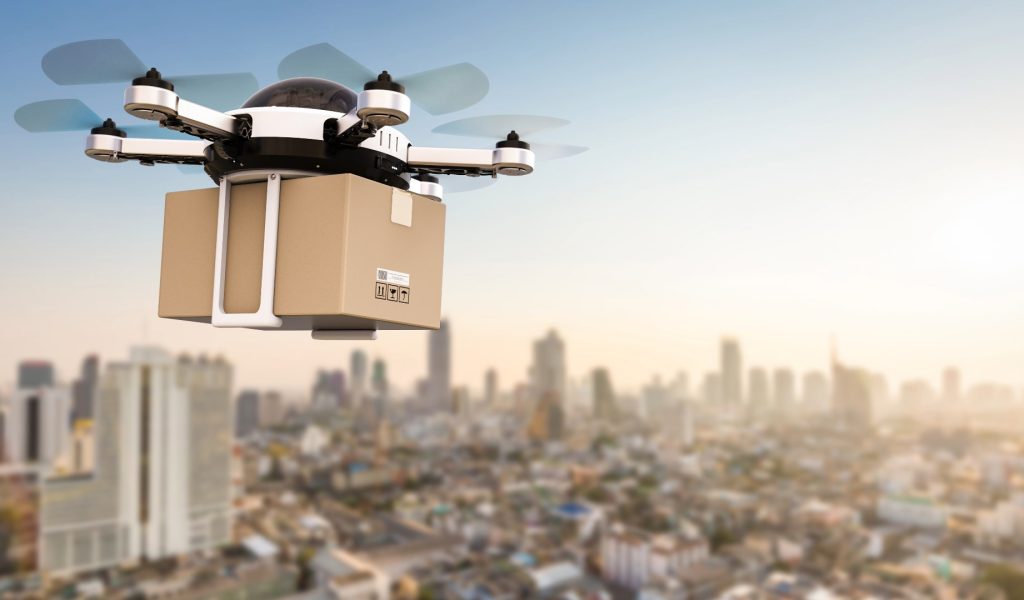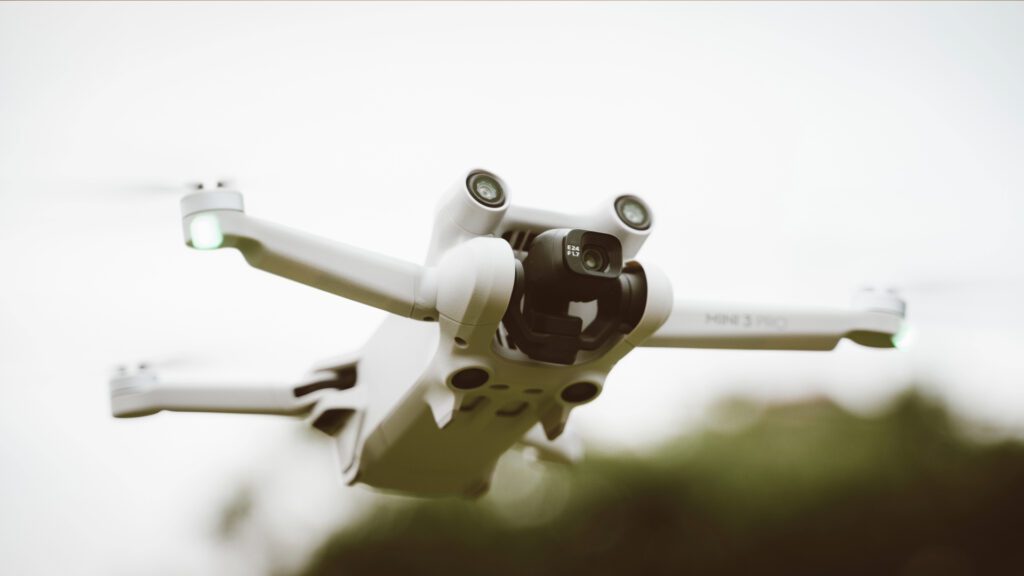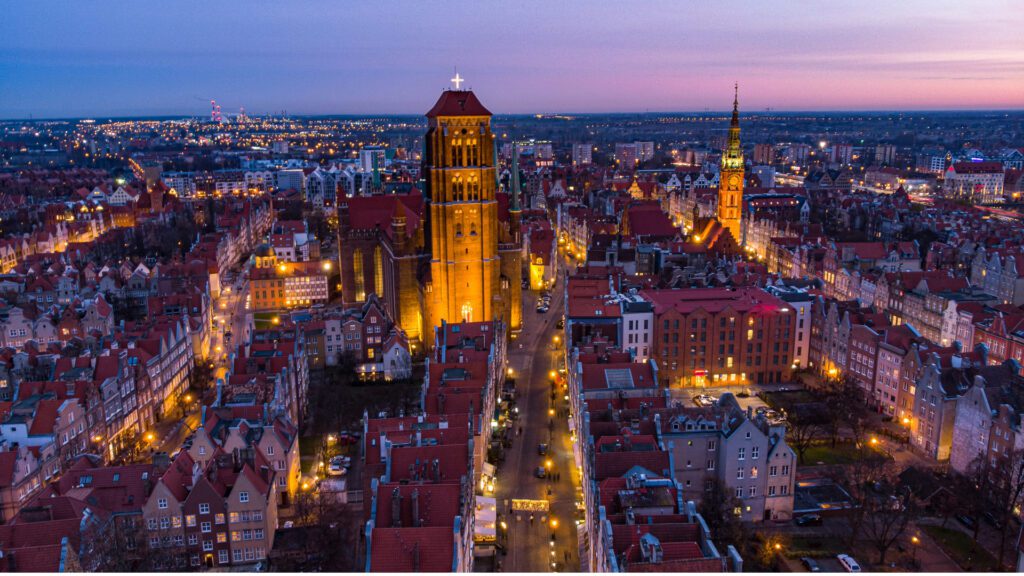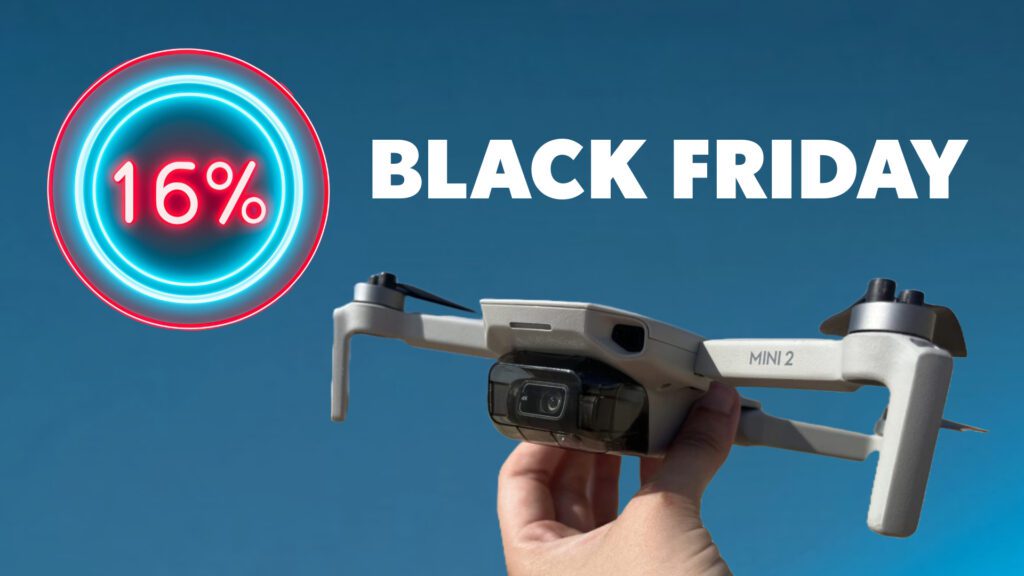Taking a step back from drone photography and content creation, the world of drone delivery is on the rise. As new and revolutionary as it sounds, it’s actually been a topic of discussion and practical exploration longer than you might have thought.
Drones are providing a futuristic, revolutionary solution for last-mile logistics, and the success doesn’t seem to be stemming from the likes of Amazon or Google.
The Rise of Drone Delivery
On a global scale, the drone package delivery market is expected to grow from $1,522 million in 2021 to $31,188 million by 2028.
Why is it on the rise?
The answer lies in the ongoing quest to improve and upgrade last-mile delivery. From crucial pharmaceutical and healthcare logistics to everyday consumer goods reaching customers’ doorsteps, last-mile delivery covers the very last step in the delivery process. From the transportation hub to the final customer.
The paradox is: customers want it fast and free, yet it is the most expensive and time-consuming part of the entire transportation process.
Drone delivery aims to fill this gap by shifting transport from congested roads to clear, open skies – all while immersing us in some futuristic sci-fi movie.
Although drone delivery only represents a small portion of the wider drone market, companies like Amazon and Google are positioning it as the “face” of the commercial drone industry. This sets the stage for smaller enterprises and startups to thrive in regions where the spotlight is less concentrated.
Amazon’s Drone Delivery: Prime Air
Back in 2013, on 60 Minutes, Jeff Bezos first introduced the idea of Prime Air to the world. If you’re not up to date, Amazon Prime Air is the next step up from Prime Delivery. Ultra-fast delivery by drone.
In 2016, the UK received its first taste of aerial delivery when one Amazon customer had an Amazon Fire TV box and a bag of popcorn land in her garden. In Cambridge, a customer who lived next door (well, a field apart) to an Amazon warehouse received her package within 13 minutes of placing her order.
A decade after its initial announcement, with an investment of $2 billion and a team of over 1000 people, Amazon Prime Air took to the skies in the US.
A small, rural town in California was the first location to trial Prime Air deliveries, followed shortly after by College Station, Texas. Drones delivered packages in under an hour, in the back gardens of customers’ homes – so long as the package weighed under 5lbs (2.2kg).
Lessons from mistakes
At the start of 2023, Amazon projected it would complete 10,000 deliveries to customers via its aerial service by the end of 2023. Once February came around, it was reported that fewer than 10 households had been served. Though a slow start, the pace hasn’t picked up since. It didn’t help that during this time, Amazon announced the layoff of 18,000 workers – one of the largest job cuts in history. The blame was placed on the “uncertain economy” and “rapid hiring.”
According to a report from Bloomberg, numerous drone crashes took place – five crashes and burns have occurred in the space of four months at Amazon’s testing site in Oregon.
With all due credit to Amazon, things have progressed since their first drone launch. In November 2022, Amazon asserted that with the introduction of its new MK27-2 drone, fewer humans or safeguards are now necessary. The vertical-flight drone also boasts its obstacle avoidance and sense-and-avoid systems.

Fast forward to just last month, Amazon announced it would expand its services to the UK, Italy, and another US state. Lucky us!
Regulatory Challenges
In 2020, Amazon received its Part 135 Air Carrier Certificate from the Federal Aviation Administration (FAA): “This means the FAA has authorized us to operate as an airline and deliver small packages via drone. Whilst this enables drone deliveries to take place, it comes with a wealth of restrictions.”
In 2023, the FAA granted exemptions on their rules for Amazon pilots. However, these exemptions are not as liberal as you might expect.
Amazon Exemptions
You can take a look at the exemption letter here. From FAA deputy executive director of Flight Standards Service, Wesley Mooty, addressed to Amazon’s Sean Cassidy.
Taken from the letter, the rules that Amazon must still abide by are:
- All operations must fly over airport property and contiguous parcels for which
- Amazon has pre-arranged exclusive use or access control.
- Operations over or within 250 ft. laterally of moving vehicles are prohibited.
- Sustained flight within 250 ft. laterally of roadways is prohibited.
- Operations over human beings and structures are prohibited. Additionally, the UA
- must remain at least 100 ft. laterally from any person or structure during all phases of
- 8 AFS-23-00532-E flight.
- Transitions over roadways are prohibited except as provided in the FAA-approved
- Amazon Prime Air MK27, Concept of Operations.
- Operations are permitted only in sparsely populated areas.
So if you’re expecting to stand in your back garden and watch as Amazon’s MK27-2 drops the phone charger you ordered half an hour ago, you’d be sorely mistaken.
To meet the defined criteria of “sparsely populated” areas, avoiding roads, moving vehicles, and people, and with the added condition that the ordered items need to be under 5 lbs, it seems that Amazon’s Prime Air customer base may be rather small.
Amazon is still being met with requirements before it can further roll out expansion. The FAA requires Amazon to fulfil several hundred hours of flying with zero incidents.
Zipline – a drone delivery company funded by Walmart – have excelled in a place where restrictions haven’t posed an issue. Unlike Amazon’s drone delivery targeting more developed, wealthier countries, Zipline operates in Rwanda, delivering medicinal products to remote hospitals. The drones launch from pulleys using electric motors to get the drone up to speed and in the air quickly.
Environmental and Economic Implications (The Good and the Bad)
It’d be nice to say that gone are the days of delayed deliveries due to traffic jams or vehicle breakdowns. Although there’s still a long way to go, drone delivery is proving its worth in acting as an alternative to conventional last-mile delivery, in making it more modernised and sustainable.
According to one study that followed JD.com in China, drone deliveries reduced carbon emissions by almost 25%, total cost by 22% and shortened delivery time by almost 21%. This study analysed the performance of drone deliveries in response to the challenges posed by Covid-19.
Deutsche Bank’s research reveals that for a typical small-box delivery, drone delivery cost is USD 0.05 per mile. In comparison, USPS last-mile delivery costs USD 2, while premium ground services like FedEx or UPS cost USD 6-6.5 per mile.
So drone delivery is looking like a cheaper, more environmentally friendly option than ground transport. With 65% of people expected to be living in cities by 2050, sticking with ground transport for deliveries on congested roads isn’t a sustainable solution.
Which leaves room for developed urban and sub-urban areas… Restrictions are still tight on flying above people and roads, but startups seem to be succeeding regardless.
A Different Goal
Shifting the focus away from developed countries and onto more pressing needs, drone delivery is providing a revolutionary solution for medical supply delivery in regions like Rwanda and Ghana.
Zipline introduced the idea of combining drones with medicine – by utilising airspace and urgency – to get people the care they need ASAP. Zipline took Rwanda’s medicinal market by storm by delivering medicinal products such as blood and platelets to remote hospitals.
As positive as the advantages deem, it would be naive to see drones as a “silver bullet” for the rising environmental issues.
Drones possess their own potential implications. For one, if Amazon drone delivery is coming to rural areas in the UK, something tells me the buzzing noises of flying cars will take away the aesthetic retreat of the peaceful countryside.
Furthermore, ensuring safe take-off, landing and a successful delivery process is only half the story. Drones will require enhanced cyber security due to their vulnerability to hacks. Some experts are arguing that the advanced IoT systems of drones will act as both their threat and defence.
Competition in the Skies
For multi-billion dollar companies such as Amazon, investment and time don’t seem to pose an issue. So why do start-ups seem to outperform them?
Founded in 2016, DroneUp is one start-up example that is poised for growth. With Walmart as its lead investor, and ranking 25 on LinkedIn’s Top Startups of 2022 list, DroneUp addresses last-mile delivery challenges using its fleet of drones.
Zipline – although funded by Walmart – isn’t afraid to show its numbers. According to Tech Africa, their drones have travelled over 27 million miles and delivered a total of 3 million health packages.
Whereas, a company such as UPS has their eye on drone usage being implemented for medical scenarios. For example, UPS introduced vaccine deliveries by air back in 2021, following a similar successful project in Ghana. However, the number of successful deliveries and current performance of this innovation are still yet to be reported.
Start-ups are seizing the market spotlight and showcasing their success. Whilst the larger, more established companies that you’d expect to excel seem to be lagging behind. It’s as though start-ups are identifying market potential where Bezos disappoints.
Amazon’s market value hovers just below $1.5 trillion USD, while Alphabet boasts a market capitalisation of $1.6 trillion USD. Consider Flytrex, an Israeli startup serving food orders to specific US suburbs. They secured $60 million in funding. Another example is Manna, a company expanding into Ireland and US states, backed by a substantial $40 million in funding.
These industry giants clearly aren’t lacking in financial resources, which begs the question: where is the excuse for such slack?
The Future of Drone Delivery
The rise of drone delivery is rewriting the rules of last-mile logistics, making it faster, more cost-effective, and environmentally friendly. As we’ve seen, drone delivery has the potential to significantly reduce carbon emissions and cut costs. Thus, offering a more sustainable alternative to ground transport.
Yet, challenges abound. Regulatory hurdles are still a large barrier, particularly in densely populated, urbanised areas. For large players like Amazon, adhering to these rules and putting its face on the industry has demonstrated minimal success. Start-ups, on the other hand, seem to adapt nimbly, seizing market opportunities that established giants have seemed to overlook. Perhaps because they are focusing on more pressing issues.
The future of drone delivery is an invigorating mix of promise and uncertainty.
That said, I think we’re still a while off before autonomous drones are flying above us dropping us our Friday night pizza – as if we’re some characters from The Fifth Element.




